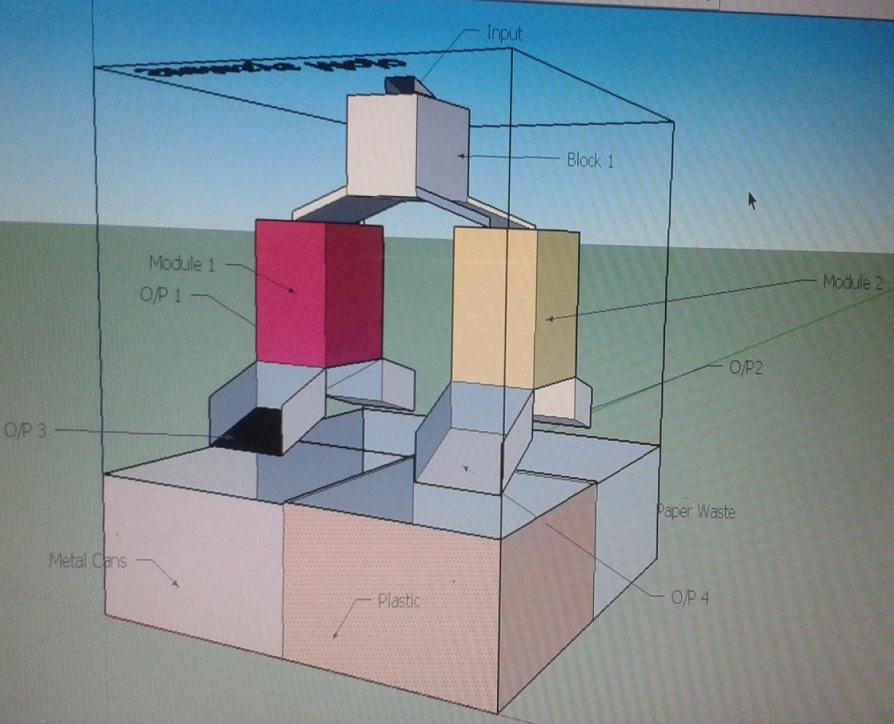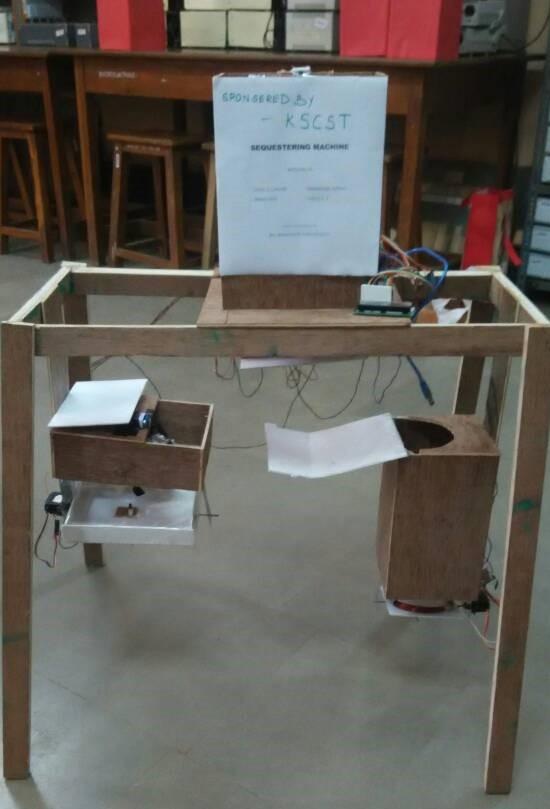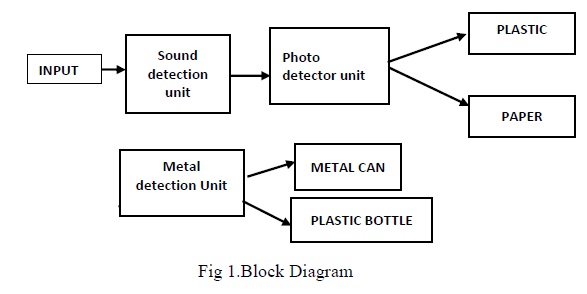





Published on Nov 30, 2023
Using efficient classification method is necessary for automatic segregation of waste for properly disposing of the vast amount of garbage modern society produces in an environmentally conscious manner. Most of the Municipal solid waste received at landfill area or waste disposal area is mixture of plastic, paper, metal and other non-biodegradable material. The effort used in manually controlled products is much higher, unhygienic and a tedious process when compared to a self-acting reflexive systems. This project introduces a radical step which revolves around systems that are capable of stand-alone operation for sequestering of materials namely plastic, paper, plastic bottles and metal cans by using canonical circuits which work on principles of photodiode, sensing of audio signal of a microphone and metal detection using the RLC circuit.
To design and implement a self-acting efficient system to segregate some of the recyclable materials like paper, plastic, metal cans and plastic bottles.
To design an efficient classification method for automatic segregation of waste for properly disposing of the vast amount of garbage modern society produces in an environmentally conscious manner.
To implement a standalone waste segregating system.
The proposed system consists of three modules working in coordination for giving the required segregation:
This unit consists of microphone. When a heavier material like metal can or plastic bottle strikes a microphone, sound is produced while the same is not the case if a light weight material like paper or a plastic strike the microphone. Thus if sound is detected by microphone, the controller is programmed to move the content towards the metal detection unit otherwise it is sent to plastic paper detection unit.

The two detecting modules are given below which form the next steps towards sequestering the materials. They are:
It consists of photo detector and a light source.
A solid-state device which converts incident light into an electric current is a semiconductor photodiode. A photodiode consists of an active p-n junction operated in reverse bias. When light falls on the junction, reverse current flows which is proportional to the illuminance.
We use this concept of photodiode which says that the light incident on it is proportional to the amount of current flow. Measuring the thickness of paper and plastic waste, the intensity of current varies. Depending on the threshold set for current the system segregates it into plastic or paper.
Measuring the flow of current for the interference of plastic and paper, the sequestering of these two materials can be achieved.
The underlying principle used for metal detection is the use of central elements, resistor(R),inductor(L) ,capacitor(C). We usean air cored inductor, which is left in air. The medium of flow of magnetic field is air. These inductors have less value of inductance. But when a metal piece is brought near the coil, metal piece acts as a core for the inductor and changes the inductance of the coil. Due to this sudden change in inductance of the coil, the impedance of the RLC circuit changes when compared to without a metal piece.

The principle of working of canonical circuits used to control the flow of theworking results in an efficient and economical way of sequestering recyclable material.

The economic value of waste is best realized when it is sequestered at the initial stage of recycling. The machine improvises the hygiene level at the work place where labourers do manual segregation of waste.This project provides a sophisticated way for waste separation.

The prototype as well as the fabricated model are unique among themselves and the sequestering machine can be upgraded by adding extensions like: i)Returning rewards for useful waste material in the form of free Wi-Fi for 15 minutes, or in the form of coupons ii) by adding overflow indication and putting it on cloud for client usage. All in all, this project work on sequestering machine stands out to be a unique model in itself helping reduce the man-efforts in segregation and automating the task with ease. Hence, the economic value of the valuable waste is regained and the rest of it which can be recycled is sent to the industry for recycling and reusing the materials. This novel idea basically helps in keeping the society and environment clean by automating the process of waste segregation.
This project work has focused on exploring the way to reduce the efforts put in an unhygienic and the tedium process of waste segregation by the human. The problem faced due to lack of aid given and responsibility shown for proper disposal of things in proper bins by individuals of the modern society also motivatedus to build this project. This project was successful in segregating the waste materials like plastic, paper wrappers, metal cans and plastic bottles with a success rate of 67.5%.
[1] Agrawal, Shashank, and Dario Vieira. "A survey on Internet of Things-DOI 10.5752/P. 2316- 9451.2013 v1n2p78." Abakós 1.2 (2013): 78-95
[2] Al-Fuqaha, Ala, et al. "Internet of things: A survey on enabling technologies, protocols, and applications." IEEE Communications Surveys & Tutorials 17.4 (2015): 2347-2376.
[3] Andrea Zanella et al. Senior Member, IEEE, ―Internet of Things for Smart Cities‖, IEEE Internet of Things Journal, vol. 1, no. 1, Feb. 2014.DOI: 10.1109/JIOT.2014.2306328
[4] Ankith, S., et al. "Design of IPv6 Network enabled Smart Water Flow Meter System for India."